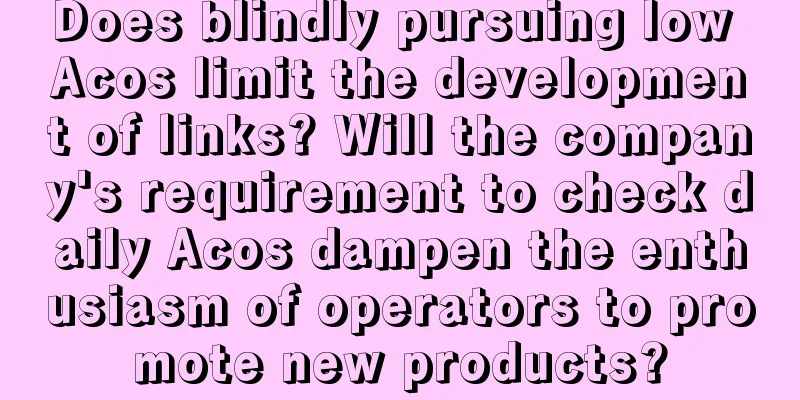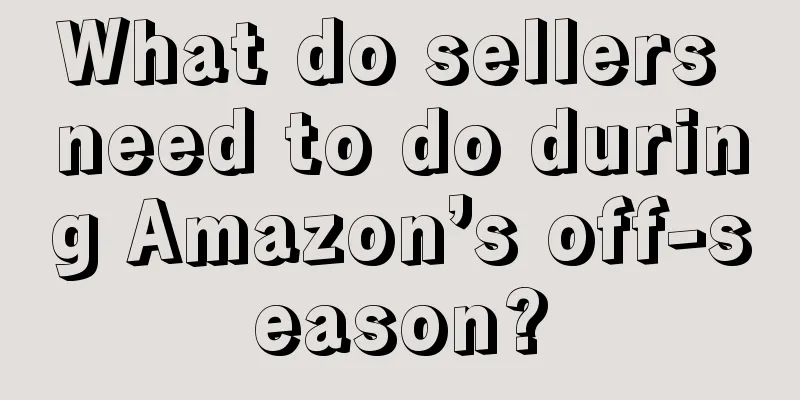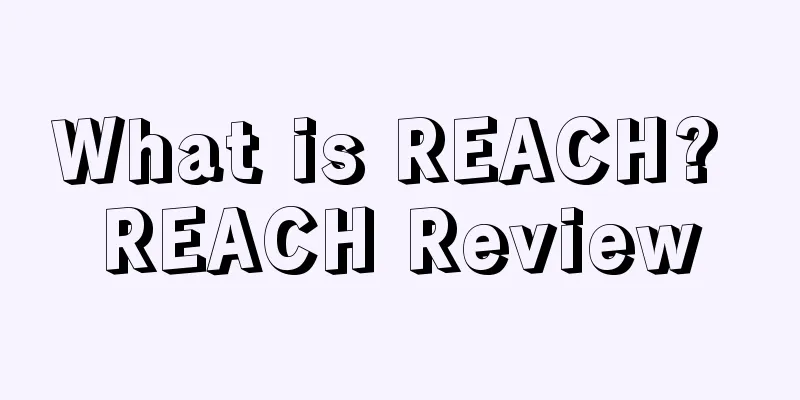|
Our company has started to require daily advertising acos, and I think this behavior is very short-sighted. I would like to hear everyone's opinions
Many companies I worked for before also required acos. If acos is guaranteed to be low, it is undoubtedly good at the moment, but I don’t think that a low acos means the advertising is good.
There are three modes for advertising: only lower, fixed, higher and lower. If you are looking for low acos, it is undoubtedly best to only lower, and then periodically optimize or turn off the ads with high acos, which should ensure low acos.
But this is not good. In the long run, it limits the development of links, which means it limits the development of stores and companies.
Generally speaking, to promote new products, you need to bid high and pursue high conversion. The ACOs in the early stage are terrible. In this way, no one will say anything, but my enthusiasm for promoting new products has been hit.
Secondly, I think since the official launch of the increase and decrease, it must be useful. I used to like using this. I think this is the most advantageous advertising model for links to become popular. However, the disadvantage is also obvious, that is, it is not stable enough. It may cause the ACOs to be very high one day and very low another day. Now that the company is doing this, I dare not use this anymore.
In short, I think issuing acos every day guarantees the lower limit, but limits the upper limit, which goes against my usual advertising philosophy.
acos is advertising expenditure/advertising sales. This data can only reflect advertising, but not natural orders, link weight, or keyword ranking. If the acos of an advertisement is very high on a certain day, will there be a lot of natural orders? Or will there be a lot of natural orders if it continues to be open in the future?
I believe that money is not spent in vain. If the advertising budget for a day is spent and there is no conversion, does that mean the profit is 0? I don’t think so. It is just accumulating connections with these words.
Link building is a long-term process. After all, it is not that you can stop building links after one year. It is related to natural orders and link weight. So it is too one-sided to only look at acos. It is even more one-sided to look at daily acos. But if acos is high, the boss will find me. I can only give up my idea and make more money while keeping acos low. But I don’t think I will make more than before because I think my ranking will drop and there will be fewer natural orders.
"Wonderful Reply"
awei777 Approved by: Someone special It is definitely wrong to only focus on daily advertising acos, but we need to know why it is wrong. In response to the original poster's description, I have the following opinions.
1. Single-day advertising acos: Amazon SP ads have a 7-day attribution period, which means that if a customer clicks on an ad on Monday and places an order on Friday, the ad order will be counted until Friday: Therefore, ad data within 7 days may change, and the acos and cvr of a single day's ad are inaccurate and meaningless, especially for products with many ad clicks and high unit prices. Therefore, it is recommended to view ad data on a weekly basis at least, which is more useful.
2. "If it is officially launched, it must be useful." First of all, this idea is definitely wrong. We have a competitive relationship with Amazon in addition to cooperation. Amazon's advertising team has KPIs, and its goal is to maximize advertising spending. The seller's goal is to maximize the input-output ratio of advertising. The two are contradictory, so how can we fully trust Amazon? The key is to know the differences between the three advertising models and then choose the one that suits us.
3. Advertising bidding model: I am probably different from everyone else. Currently, I basically only use down only for all my products (regardless of whether they are old or new products, the price range of the products I have is $10-$60). I used all three before, but after reading other people's teachings, I thought it made sense, so I only use down only.
At present, no matter it is a new product or an old product, first of all, the traffic is not affected. There will be no clicks due to using down only. The conversion rate cannot be said to increase, but the advertising CPC is completely controllable. I will briefly explain the principle. The reason for not using up & down has been mentioned above. It is irrational to give Amazon the right to increase the advertising bid because the goals of both parties are contradictory.
Another serious problem with up & down is that CPC is uncontrollable, which leads to uncontrollable ACOs. As for why we use down only instead of fixed bid, it is because Amazon will have an estimated CTR and CVR for our products and competing products. Therefore, in theory, the platform can better place ads, so we can leave the bid reduction to the platform to achieve a win-win situation for all parties (we give up low-competitive advertising traffic to save advertising fees, the platform earns more commissions, and buyers improve their shopping experience)
4. If the advertising budget for a day is used up and there is no conversion, will the revenue be 0? Let’s go back to the first point about the attribution period. If there is no conversion on this day, the orders placed by the clicks on this day may be counted for tomorrow and the day after tomorrow. This is why it is recommended to view advertising data in a time dimension of at least one week. In addition, the fact that the product can be clicked on this keyword has actually proved that the product is related to this keyword. The key is to use the CTR and CVR data (high CTR and CVR) accumulated by the advertisement to improve Amazon’s estimates of the product’s CTR and CVR (that is, the product’s weight), so that the product’s natural ranking can increase.
If a product accumulates advertising data with low CTR and CVR, its ranking will naturally drop. In addition, the CTR and CVR are compared with the competition, so sometimes a product has a 30% advertising conversion rate, but its ranking remains unchanged. The fact is that the conversion rate of the top competitors is likely to be more than 40%.
Anonymous user
Agree with: your big brother's big brother, Wuxinjie, rockytian, hehepenn, fluffy2023 more » ACOS does not mean that the advertisement is good. For high-priced products, the advertising ACOS is naturally low, and for low-priced products, the advertising ACOS is naturally higher. However, many low-priced products have very high profit margins, with ACOS of 40% to 50%, which is also very normal. In short, the most important thing is that the product is profitable, and you can't just focus on whether the ACOS is high or low...
The famous advertising master John Wanamaker said: I know that half of my advertising expenses are wasted, but unfortunately, I don’t know which half is wasted. The benefits brought by advertising cannot be reflected in a short time, and we cannot be obsessed with immediate benefits, so it cannot be said that advertising expenses are wasted.
From the perspective of advertising history, the development of advertising theory has always been from "broad advertising" to "narrow advertising". Because only "narrow" can be more precise and reduce unnecessary waste. In other words, the history of the development of advertising theory is fundamentally the history of finding "the half of the advertising budget that is wasted". awe i777 • Shenzhen • 3 days ago "I know that half of my advertising expenses are wasted, but unfortunately, I don't know which half is wasted." This sentence is aimed at brand advertising, which is mainly used to increase brand awareness and create brand premium. Usually, the minimum goal is set in quarters, and the promotion effect is difficult to quantify, so there is this famous saying. It is not the same as the Amazon SP advertising we often discuss. Amazon's SP advertising is performance advertising, and its core purpose is to obtain advertising traffic and get the most orders with the least cost. Therefore, SP advertising that has no conversion or very poor conversion for a long time is a waste of advertising fees.
Lawrence Yangyang - Amazon Advertising Specialist Agree from: ccdzd1, xiaonini, muyan067, earn 100,000 this year, yyyal666 more » Paying attention to ACoS is not a problem, the problem is that we have to pay attention to ACoS every day . This reminds me of some of my previous experiences. A boss asked the operation department to publish the store profits every day. As long as the profits were not good on that day, everyone would be very anxious and would do some very short-sighted and detrimental actions to long-term goals. Goal setting should be phased and strategic, rather than changing the goals because of anxiety when the profits are not good on a certain day. Then what is the use of the decisions we made based on data and spent a lot of time in meetings?
Focusing on ACoS is not a problem. The problem is how to find a suitable reference target . If one of my colleagues and I is responsible for high-order products and the other for low-order products, the product situations are different, and the advertising ACoS is naturally different. It is completely meaningless to compare them together, and the resulting anxiety and internal friction in the team is completely meaningless.
Focusing on ACoS is not a problem. The problem is focusing on ACoS alone . Any product needs a comprehensive analysis from multiple dimensions. For example, if a product has a high ACoS compared to other products, but the proportion of advertising costs is much lower, should we make drastic changes to advertising? Little do we know that the balance that has been achieved with great difficulty may cause the product to sell worse and worse because of your adjustment. Cross-border Adu • Shenzhen • 2 days ago I have met a big boss and read the analysis of many of your advertisements, which has benefited me a lot.
It is normal for many bosses to pay attention to ACOS, because advertising directly determines whether the product can make a profit. The more money spent on advertising, the less total profit. Excellent operations can reasonably control ACOS, and the level of advertising also determines whether an operation is a good operation.
When you work alone, you will pay more attention to ACOS than ever before. After all, you are spending real money, and the exchange rate is X7. You don't feel anything when you spend the company's advertising expenses, 100, 500, or 1,000 US dollars a day. But when you work alone and spend the money in your own bank card, you will know whether you feel sorry for spending on advertising expenses.
As an operator, you should always pay attention to daily advertising expenses, there is nothing wrong with that.
Anonymous user
Agree with: Workingman Xiaoyu, Lucyzhang, ccdzd1, siukei, Blue Sea Fishing Expert More » What is the most appropriate ACOS? The lowest is not necessarily the most appropriate.
I think this question is very simple. It is about how to balance the core indicators such as market potential, sales volume, profit, and profit margin . We need to find the most suitable ACOS instead of blindly pursuing a low ACOS.
Example:
ACOS50% 1000 orders per day,
ACOS30% daily orders 500 orders,
ACOS10% daily orders 100 orders,
If the market is in a period of rapid growth and is an incremental market, then the goal is generally to grab the top spot and be among the top three brands. An ACOS of 10% and 100 orders per day will be a waste of time.
If the market is already in a mature stage and is a stock market, then the goal may be to maintain market share. ACOS30% and 500 orders per day is very good.
If the market is already in recession and has entered a stage of negative growth, then the goal may be to maintain a monopoly at the top. The vast majority of merchants have withdrawn or died and can no longer pose a threat, so the goal is simply to reduce costs and increase efficiency, or even raise prices to expand brand premiums.
While ensuring the achievement of the established goals, try to reduce ACOS as much as possible and find the best balance point in the dynamically changing ACOS. That balance point is the best ACOS.
Anonymous user
Approved by: Japan Asia's Best Newcomer of the Year, jakshowtime, 湛藍的Blue, dingouAlice, siukei more» Now the platform is competitive with prices and advertising fees. If the ACOs are slightly higher, there will be little profit. It seems that more products are sold, but the actual inventory pressure is more funds, but it is possible that your company's positive cash flow will not be seen for a long time.
It's all a matter of attitude. People who work in operations only care about getting orders/weight and commissions. As for the risk of high investment? If it works, it means you are awesome at operations. If it doesn't, you can just leave and make fun of your boss.
To tell you the truth, the level of ACOs is related to the market supply and demand/pictures/prices of the product, and has nothing to do with the operation's delivery skills. The operation is just an operator who follows the instructions of the Amazon system.
Operators who think they are capable should try working on their own and feel whether it hurts to spend the advertising money, and then look back at this issue. B eles • Shenzhen • 3 days ago To tell you the truth, the level of ACOs is related to the market supply and demand/pictures/prices of the product, and has nothing to do with the operation's delivery skills. The operation is just an operator who follows the instructions of the Amazon system.
I cannot agree with this statement, but it is still very relevant.
Koko roHaru • Shenzhen • 3 days ago It's very pertinent, but I don't agree that advertising has nothing to do with operation skills. The ACOS of advertising is really the same for different operators. For the same product, factors such as market supply and demand/price don't need to be considered. There are indeed differences in the graphics and texts made by each operator, but more of it is the subsequent adjustments after the advertisement is launched. I have seen many cases where the ACOS was high at the beginning, but then the ACOS decreased as sales increased.
Boo mToday • Hefei • 2 days ago If the timeline is extended, the advertising conversion rate will tend to be stable, the CPC will tend to be stable, and the average order value will also be stable. Your Acos will be stable, and it will be what it should be. What can be optimized is actually Tacos, by reducing the proportion of advertising orders. This process will be relatively long, as short as a week or as long as a month, until the marginal effect of reducing the advertising budget leading to a decline in natural traffic is measured. I don't know if this statement can be understood.
Yalishan • Zhejiang • 19 hours ago The last sentence to refute you is that for the same sku, a general company may make two links and two operations, and the difference is still large. If there is no difference, then you can just operate the third-party hosting and make money.
Dragon swimming in the sea Agree from: Japan Asia's Best Newcomer of the Year, Lucyzhang, 2803284033, Wickham, ccdzd1 Personal opinion: 1. There is definitely nothing wrong with a company paying attention to ACOS. It cannot be said that paying attention to ACOS is short-sighted. Do you think a company that does not care about ACOS can survive on Amazon?
2. From an operational perspective, if you cannot clearly explain ACOS, I think you are not a qualified operator. Before launching an ad, you should have your own framework and model with a clear purpose. The high or low ACOS is just one of the ways to reflect it. I have always believed that ACOS itself is a variable. As an operator, you should have your own ACOS expected data for each ad. This data can be high or low. If the actual data is very different, this is where the operator should work hard to improve.
3. Of course, we do not rule out those leaders and companies that pursue the ultimate ACOS data. I strongly disagree with this. Advertising has a lot of invisible data. Sometimes a connection is formed between advertising and the word, but the advertising does not generate orders, but the orders are still generated. You cannot rule out that the advertising is not effective.
4. ACOS must be taken into consideration, and more importantly, the premise and goal of advertising and other comprehensive factors should be taken into consideration. If you only care about a single data, both the operation and the company are too narrow-minded.
Ah, I'm in a daze - I really want to lie down... Agree with: Japan Asia's Best Newcomer of the Year I think acos is linked to your current operating model. The corresponding acos requirements are different for distribution, fine distribution, and high-quality goods.
The distribution of goods is more focused on distribution, with basically no advertising, and acos is naturally not taken into consideration;
The main purpose of precision shopping is to make acos profit. It is sufficient to control acos below the profit margin. If you want more orders, you can expand it on this basis.
High-quality products are more about pursuing ranking and order volume. In the early stage, if there is no black technology, advertising is undoubtedly the best way to increase order volume and improve ranking. At this time, I think the focus should be on ranking, order volume and conversion rate. If the conversion rate meets the standard, acos may be particularly ugly (especially for low customer unit price);
So it still depends on your company's definition of the operating model. The information I have seen so far only requires you to publish daily acos, and does not require you to take any measures. It is recommended that you combine your company's definition of the model and then measure what kind of state acos wants to be.
dayong I think the boss is monitoring the ACOS instead of requiring a low ACOS.
The person you really want to monitor may not be you. Some operations are irresponsible, so it is understandable that the boss wants to monitor.
If you need to improve your ACOS during the promotion phase, I think you can make an ACOS plan for your boss. If your boss agrees, you can act according to the plan.
If your boss is not stupid, he will probably agree. Not only will he not be angry, but he will also respect you more and think that you are a person who can think on your own and have a promising future.
However, monitoring is still necessary, and it is still necessary to distinguish poor operations. Getting rid of poor operations is theoretically more beneficial to good operations. If the company's profits are higher, your own income will also be higher, isn't that great?
Dropped out of high school to work on Amazon - Mo Yu Supervisor's trumpet Agree with: Japan Asia's Best Newcomer of the Year, Dionysus Bai Lu Shui Leaders or bosses who don’t understand Amazon are disgusting: If it were me, I would ask: A product advertisement has a unit price of 9.99, a CPC of 2.5, a CTR of 3%, 100 clicks, 30 conversions, and an ACOs of 83.5%. Seeing that the ACOs is so high, do you think this advertisement is poorly executed? q01234 • Shenzhen • 2 days ago Although I am giving an example, I would like to point out that this price plus the conversion rate is likely to be a low price exchange for an order. Such an advertisement is at least not good, although the click-through rate is high.
Cross-border Adu • Shenzhen • 2 days ago I would also like to argue that with an average order value of 9.99 and a CPC of 2.5, unless you have a large number of organic orders, you should give up on this product early. With an ACOS of 83.5%, do you think your profit is 200%?
Fairy tale of the years or a joke • Shenzhen • 1 day ago For a product priced at $9.99, with a gross profit margin of 40% (which is rare for products), you need 33 organic orders to barely break even with a $250 spending. If the product is no longer new and there are no organic orders, your advertising is poorly executed.
Dropped out of high school to work on Amazon • Shenzhen • 1 day ago Seeing you guys are so arguing, I'll argue with you too hahahaha: It's not too much for old products to have advertising orders account for 20%. 30 advertising orders can bring 120 natural orders. If the gross profit is 40%, the total gross profit is $600, minus $250 advertising fee, is it still too little? For example, there are many top sellers in the market with advertising orders accounting for 5%, and there are also many products with a price of 9.99 and a price of 40%, such as jewelry.
|










